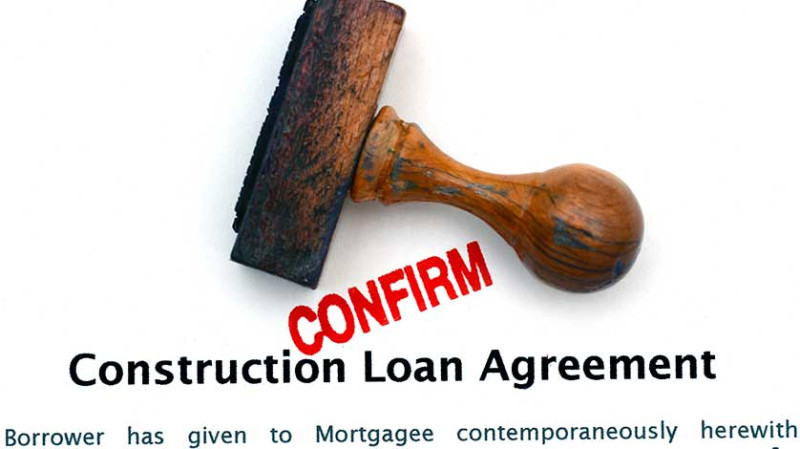
Dreaming of building your own home? Whether you're a young professional ready to settle down, a DIY enthusiast eager to take on the ultimate project, or a seasoned tradesperson keen to create your personal masterpiece, understanding the construction loan process is a crucial first step. Building a new home can offer incredible rewards—financial and personal—but it also comes with specific regulatory, financial, and planning challenges in the UK.
Construction loans are a specialised form of financing designed to cover the costs of building a residential property from start to finish. Unlike a standard mortgage, which releases funds in full, a construction loan is typically released in stages according to the progress of the build. In this blog post, we'll break down the key requirements you must meet, explain how construction loans work, and help you take the first steps toward building your dream home.
What is a Construction Loan?
A construction loan, sometimes referred to as a self-build mortgage in the UK, is a short-term loan that helps finance the construction of a property. It's different from a traditional mortgage loan, which you get when you're buying a completed property. With a construction loan, funds are progressively released throughout the various stages of building—foundation, structure, roofing, completion, etc.
In most cases, once your home is complete, the construction loan converts into a standard residential mortgage product. Some lenders refer to this as a "build and convert" agreement. This flexibility makes construction loans ideal for those setting out on self-build projects with confidence.
Construction loans are typically used by:
- Self-builders constructing their primary residence
- Developers creating residential units for resale or rent
- Trades professionals building their own home as a personal project
Basic Construction Loan Requirements in the UK
Before applying, it’s essential to understand what lenders will expect before offering to finance your self-build. Below is a breakdown of the main criteria most UK lenders look for:
| Requirement | Description |
|---|---|
| Detailed Build Plan | Architectural drawings, planning permission, and a clear timeline of all construction stages. |
| Planning Permission | Full local authority approval must be in place before applying for a loan. |
| Own Land or Deposit | You must either own the land you'd like to build on or have funds set aside to purchase it. |
| Deposit | Typically 15%–25% of the total cost (including land purchase), or 5%–10% with specific lenders. |
| Credit Check | You must demonstrate good credit history; affordability checks apply. |
| Qualified Builder or DIY Proof | If you're building it yourself, experience proof or employing certified professionals is required. |
| Costed Budget | A comprehensive breakdown of all expected materials, labour, contingency funds, and more. |
| Insurance | Self-build insurance covering liability, tools, accidents, and structural damages is mandatory. |
As you can see, construction loans aren't issued lightly. Lenders want assurance that your project is viable and that you can complete it within the proposed budget and timeframe.
Planning Permission: Step 1 to Building Legally
It might sound obvious, but obtaining planning permission is the first legal hurdle of any construction project in the UK. Without local council approval, lenders won’t issue loans, and breaking ground could lead to enforcement action, fines, or even demolition of unauthorized structures.
You can apply for planning permission through your local council’s planning portal. Expect to submit full architectural drawings, site surveys, and impact studies (especially if located in greenbelt or conservation areas). The decision typically takes 6–12 weeks, although complex applications may take longer.
Outline planning permission gives you a general go-ahead in principle, but most lenders will want you to have full planning permission with pre-approved designs before fully underwriting your loan
How Much Can I Borrow to Build My Own Home?
Most construction loans cover between 65–85% of the total build and land value. A few specialised lenders – like Ecology Building Society, BuildStore, or the Mansfield Building Society – offer products geared specially for self-builders, including green homes or off-grid dwellings.
The precise amount you can borrow involves several factors:
- Your income and affordability profile
- Projected value of the finished property
- Construction budget and land value combined
- Loan-to-Value (LTV) ratio permitted by lender
You may also be asked to show contingency funding (often 10–15% extra) to cover unforeseen costs. Lenders don't like surprises, and delays or materials shortages can be costly if not accounted for.
How Do Stage Payments Work?
Unlike a traditional lump-sum mortgage, construction loan payments are made in phases. This is referred to as a stage payment release structure. Payments are released typically after completion of the following key stages:
- Pre-site works / land purchase
- Foundations finished
- External walls up to wall plate
- Roof completed (water tight)
- First fix (plumbing, electrics), internal walls, plastering
- Second fix (flooring, painting, fittings)
- Final completion and sign-off
The exact stage breakdown can vary depending on your lender and the style of home you're building (modular, timber-frame, brick-and-block, etc). Some lenders release payments in arrears – after each stage is complete – while others offer funding in advance for purchases like materials.
Be sure to check with your loan provider about their policy—this may significantly impact your cash flow during construction.
Should You Use a Professional or Build It Yourself?
If you’re a capable DIY enthusiast or tradesperson, building your own home can save you tens of thousands of pounds. However, many aspects of homebuilding must still be undertaken or signed off by certified professionals (especially structural, gas, and electrical work).
Some lenders require that your contractor be NHBC registered, a member of the Federation of Master Builders, or able to provide 10-year building warranties. If you're opting for full or partial self-build, expect to show detailed records of your qualifications, previous projects, cost savings, timelines, and subcontractor involvement.
Getting Your Paperwork Ready
When applying for a construction loan or self-build mortgage, you'll need to submit comprehensive documentation to prove your viability. Here’s what most lenders will expect as part of your application:
- Identity and credit check documents
- Proof of income and bank statements
- Full planning permission certificate
- Detailed cost breakdown of the build
- Building regulations approval
- Architectural construction drawings
- Insurance certification for self-build
- Schedule of works with milestone payment expectations
- Estimate or quote from main contractor/trades
The time invested in getting your application right will pay off in the approval phase. Lenders are more likely to approve well-prepared files without delays or additional requests for information.
Don’t Forget About VAT Relief!
If you are building a new house (not simply renovating or altering), you may be eligible for a VAT refund under the UK’s DIY Housebuilders Scheme. This allows you to reclaim VAT on eligible building materials and services used in the construction of a new residential dwelling. The refund claim must be made within three months of project completion.
Carefully collect all receipts and invoices for reclaiming VAT. It's a phenomenal way of reducing your overall build costs by up to 20%—a significant saving for most self-builders.
Final Thoughts: Take the First Step
Building your own home is a rewarding venture - from green building incentives to innovative materials, modern homeowners and designers have more tools than ever before to build sustainably, affordably, and beautifully.
Meeting construction loan requirements does mean doing your homework, but the payoff is getting to live in a home tailored exactly to your lifestyle and values. Whether you're an architect designing a statement dwelling, a professional tradesperson keen to control every detail, or a first-time buyer dreaming of a forever home—now is the perfect time to explore your construction loan options.
Be organised, plan ahead, and speak to mortgage brokers who specialise in self-builds. They can advise on the right lenders and packages to support your vision. Ready to build your dream?


